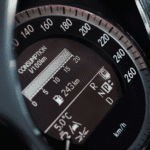If driving on low transmission fluid is your only option, then you need to be aware of the issues to look for. This article isn’t to be used as an excuse for you to drive your car with low fluid. I can’t offer such guarantees as every car, and every leak is different. But I’m sure you can guess that a slow leak of transmission fluid may mean you can drive for a little bit longer.
A car gives lots of feedback, and using your common sense, you should be able to judge whether it is ok to carry on driving and for how long, which, of course, is not long if you want to be safe.
The problem is that if this issue is completely ignored, the other issues that will follow when driving on low transmission fluid could result in a hefty repair bill.
What Happens if You Run Low on Transmission Fluid?
In certain situations, you may be forced to drive a vehicle with low transmission fluid. However, when there is still a considerable amount of fluid in the gearbox, a low level will not cause any issues. You can drive the car with no risk of causing harm. A leak may need to be fixed, or just topping up is required. The problem with driving a vehicle with low transmission fluid is that you will not know it’s low without checking the level. Checking the fluid level is just as easy to top up to the correct level.
If the transmission is low to the point where there is virtually no fluid left, driving the car can cause significant damage. This damage could lead to the transmission needing to be replaced or rebuilt and multiple supporting components. Drive shafts, input shafts, and clutch components could all be added to the list of items no longer serviceable.
The decision to drive with low transmission fluid is yours. Driving on low transmission fluid may not result in any repercussions, but it’s just as easy to check the transmission fluid level to determine whether it’s safe or to refill it.
Most fuel stations carry a small stock of transmission fluid. If you’re handy with cars, you could probably check and top up the transmission fluid in the gas station car park in 10-15 minutes (depending on the vehicle).
How Far Can You Drive Low on Transmission Fluid?
As we’ve already touched on, a few hundred kilometers journey will not be an issue with low transmission fluid where the transmission still contains fluid. With little to no fluid in the transmission, do not expect to drive more than 5-10 km before you start noticing problems.
Gearbox repairs or replacements are not cheap, so avoid driving at all costs with no fluid. Even just going to the garage for repair could cause more damage than was there. Most garages offer a collection service where your car is transported on a trailer.

6 Problems To Look Out For When Driving Low On Transmission Fluid
The following issues are the most common to be aware of. Of course, this is not all the potential problems to be mindful of when driving at low transmission fluid levels.
Shifting Issues
The metal gears in the transmission system rely on the lubrication provided by the transmission fluid. If the fluid level drops significantly or runs out completely, issues related to gear shifting may arise. One of the most common symptoms is difficulty in selecting a gear. As you continue driving, it can worsen to the extent that the car may pop out of gear. The situation may demand that you apply excessive force to change gears, which is the most significant indication of a problem.
Overheating transmission
Overheating transmission will have the same effect as an engine overheating; the dashboard could have warning indicators.
But a strong smell and smoke may usually rise from the transmission. By popping the hood, you can confirm the smoke is coming from the transmission.
Unusual Noises
Unusual noises, such as loud whirring and humming when driving along, may manifest themselves. When changing gears, crunching or metal-on-metal grating noises could indicate that the transmission box gears may be dry or damaged.
Warning lights
Pay attention to the dashboard; any of the warning lights connected to the gearbox in some way could start being erratic or illuminate. The engine management light would be the one to be aware of the most. If your windshield washer level comes on, it is not the transmission fluid and is just a coincidence.
Fluid leaking
Check the ground for dripping fluid if you find a safe place to pull over and suspect an issue. If the transmission fluid leaks, driving the car is no longer an option. You should call your recovery company and have the towed to a garage for repair.
Jerking when driving
If you feel like the car is jerking when driving at a constant speed, it could signify that the transmission’s internals are damaged. Rotating gear teeth that are missing teeth or chunks of the gear will not mesh together smoothly, which you will feel when driving.
Frequently Asked Questions
How Do You Check The Transmission Fluid Level?
To check the transmission fluid level, locate the transmission dipstick, usually near the engine oil dipstick. Then, with the engine running and the transmission in park or neutral, pull out the dipstick, wipe it clean with a cloth, reinsert it, and pull it out again. The fluid level should be between the high and low marks on the dipstick. If the level is low, add the recommended transmission fluid type through the dipstick tube.
Is there no warning light in cars indicating low transmission fluid level?
Not all cars have a warning indicator. Most modern vehicles have a warning light that indicates a low transmission fluid level. However, the exact location and appearance of the light may vary depending on the make and model of the car.
Final Thoughts
Driving on low transmission is a flip coin scenario; on the one hand, you will experience issues. On the other hand, you experience no problems at all. Low fluid levels should be taken very seriously. A wiser decision would be not to drive the vehicle and seek repair. If you are on the road, stop at the nearest gas station or garage to top up the fluid level.









